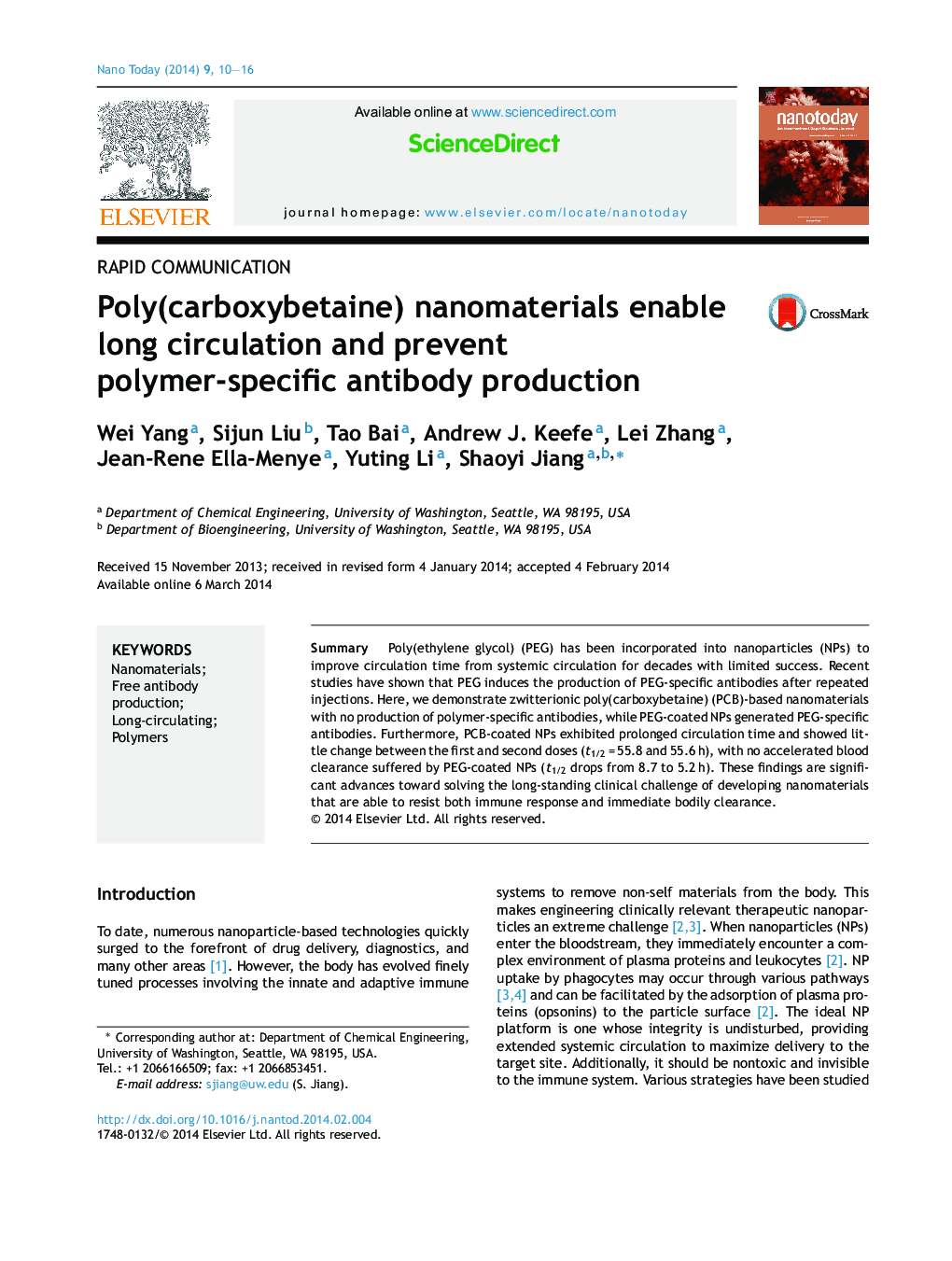| Article ID | Journal | Published Year | Pages | File Type |
|---|---|---|---|---|
| 32303 | Nano Today | 2014 | 7 Pages |
•Poly(carboxybetaine) nanomaterials do not induce antibody production.•Poly(carboxybetaine) nanomaterials have a prolonged circulation half-life of 56 h.•Poly(carboxybetaine) nanomaterials have similar half-life between two injections.•PEG-coated counterparts suffered from accelerated blood clearance.
SummaryPoly(ethylene glycol) (PEG) has been incorporated into nanoparticles (NPs) to improve circulation time from systemic circulation for decades with limited success. Recent studies have shown that PEG induces the production of PEG-specific antibodies after repeated injections. Here, we demonstrate zwitterionic poly(carboxybetaine) (PCB)-based nanomaterials with no production of polymer-specific antibodies, while PEG-coated NPs generated PEG-specific antibodies. Furthermore, PCB-coated NPs exhibited prolonged circulation time and showed little change between the first and second doses (t1/2 = 55.8 and 55.6 h), with no accelerated blood clearance suffered by PEG-coated NPs (t1/2 drops from 8.7 to 5.2 h). These findings are significant advances toward solving the long-standing clinical challenge of developing nanomaterials that are able to resist both immune response and immediate bodily clearance.
Graphical abstractFigure optionsDownload full-size imageDownload high-quality image (263 K)Download as PowerPoint slide
